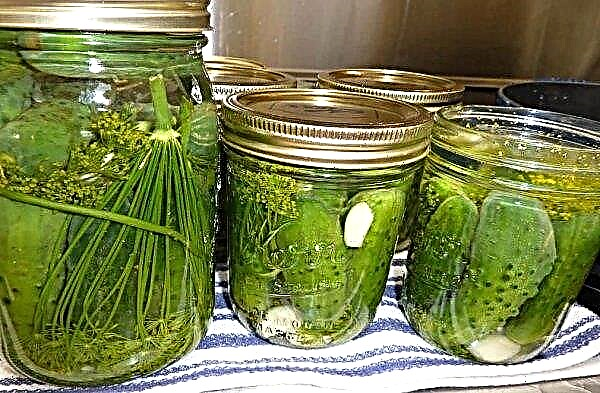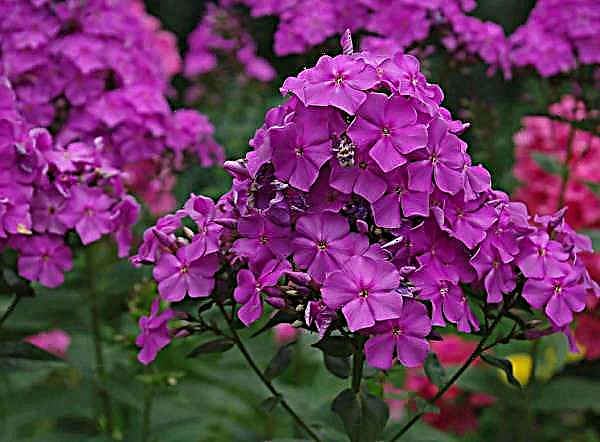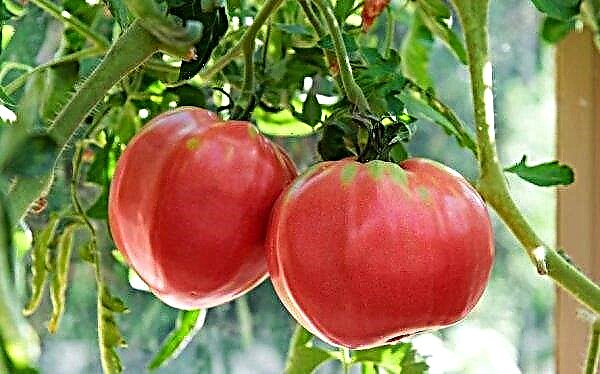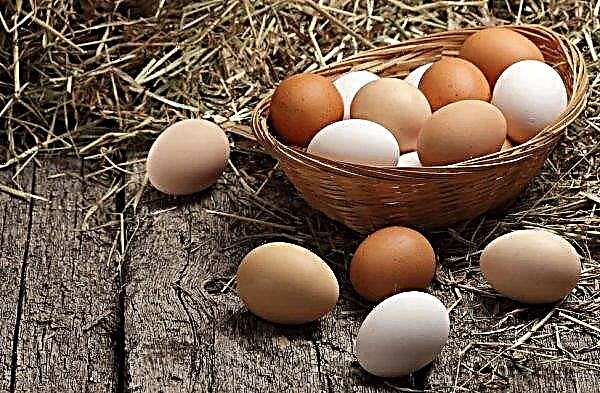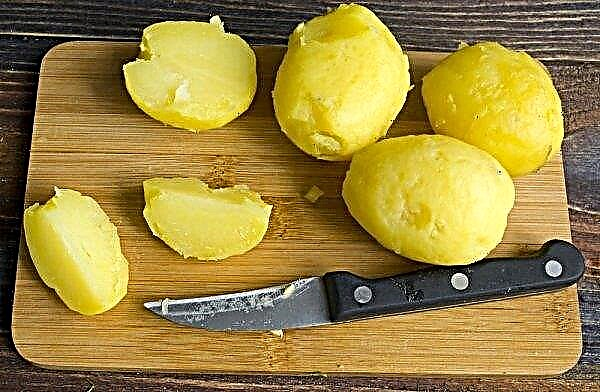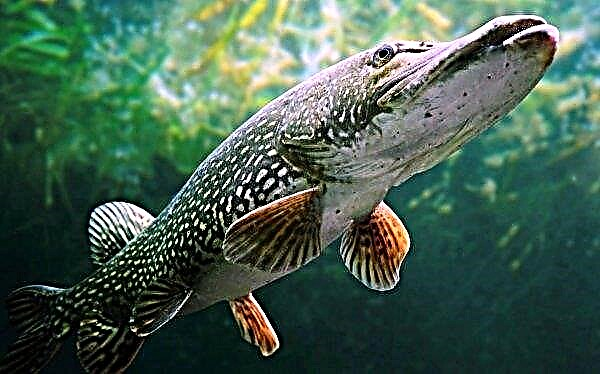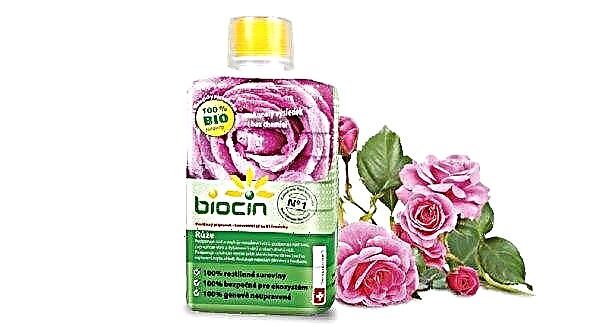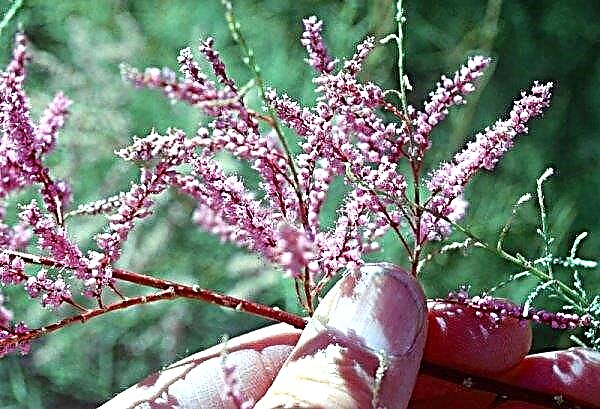Beets are a vegetable that many love. Delicious and healthy dishes are prepared from it. The culture is grown in almost every area. There are many varieties of vegetables, but Boyar is becoming more and more popular. What is remarkable about the variety, what are the subtleties of care and cultivation, is described below.
Description and characteristic
A new beet variety was added to the Russian State Register several years ago, but has already managed to win fans. It is characterized by high productivity (3–6 kg per 1 m²) and medium early ripening period (65–120 days).
Selection history
Variety Boyarynya bred by Russian breeders and recommended for cultivation in such areas:
- Central;
- Volga-Vyatka;
- Central Black Earth;
- Ural.
Did you know? The brighter and more saturated the color of beets, the more it contains vitamin C and mineral salts.
Description of the fetus
Boyar is distinguished by large (400–600 g) root crops. Fruits are rounded, with a small head and thin skin. The pulp is juicy, uniform, has a rich burgundy hue, does not form rings, has a pleasant sweetish taste.
Advantages and disadvantages
- The advantages of beetroot Boyarynya are:
- large, smooth fruits;
- high taste;
- good drought and cold resistance;
- resistance to flowering;
- strong immunity;
- high productivity;
- good keeping quality without loss of qualities.
As a drawback, gardeners consider the inability to get a good crop under adverse conditions.
Sowing seeds in open ground
The Boyarynya variety is popular in that it can be planted directly in open ground, without preliminary seedling cultivation. For many middle-range gardeners, this is a real find.
The timing
Vegetables are planted in open ground in late April or early May, when the soil warms up to + 6 ... + 8 ° C, and air - up to + 10 ... + 12 ° C.
Important! Spring frost seedlings are not afraid.
Choosing a place and features of crop rotation
For beets, you need to properly prepare the soil and select a site. Recommendations:
Recommendations:
- The landing area should be well lit. A planted planted in the shade of a crop will have small fruits with mediocre taste.
- Soil acidity should be neutral. Permissible pH level is 6–7 units. An alkaline environment will provoke rotting of the fruit, and an acidic environment will slow down the development of the culture. To reduce acidity, ash is used and the amount of organic fertilizers is reduced.
- Prepare a place in the fall. The site is dug, adding along the way manure, compost or bird droppings.
- Predecessors. Well, if on the site before planting beets celery and onions were grown. Rapeseed, cabbage and spinach deplete the soil and are therefore undesirable precursors. It is better to alternate planting beets with crops, legumes, cucumbers and zucchini. Clover, which grows on the site before the beets, will help to harvest a rich harvest of root crops next year. Solanaceae are bad predecessors because they have the same diseases and pests.
- Neighbors. If you like mixed planting, beets can be grown together with celery, cucumbers, carrots and various varieties of onions.
- Ground water. Beets do not like the high occurrence of groundwater, therefore, if it is impossible to choose another site, the root crop is best grown on the ridges.
- Do not grow beets in one place for several years in a row. Already in the second year, the fruits are smaller and sluggish. Sowing alternate with other crops.
The scheme and depth of crops
Seeds can be planted as if they were dry, or they can be soaked a day before planting in a solution of manganese or ash. To improve seed germination, they are kept in warm water for 5-7 days.
Important! Dry material will need more time for germination and daily watering.
Sowing material is deepened by 2 cm, and if the soil is too loose, then by 4 cm. It is possible to sow in one row or several. The main thing is that the distance between future bushes in a row should be 5–7 cm, and between the beds - 20–30 cm.
Further care
From the sown seeds several shoots can germinate, so the planting should be thinned out. They do not recommend pulling out everything at once, since seedlings can be weak and simply die. After a month, the plantings are thinned out again, leaving a distance of 10 cm between the plants.
Fertilizer application
More often, beets are fertilized with such organic top dressings:
- bird droppings;
- mullein;
- ash;
- greenery.
Top dressing is carried out once a month. When using mineral top dressing, drugs with a predominance of potassium and phosphorus, which include manganese, magnesium, boron, should be selected. The latter will help protect the plant from the formation of gray rot.
Important! Nitrogen dressing is applied in small quantities and only at the germination stage.
Watering
The soil is moistened as needed. To make root crops sweet, they need to be watered 2-3 times per season with salted water. It is recommended to water the plantings in the evening from a wide watering can (or by sprinkling). This will allow moisture to evenly distribute, and after moisturizing, a crust will not form. After watering, the soil is mulched to better maintain moisture. To do this, use peat or small sawdust.
Soil care
Variety Boyarynya does not cause trouble in the care. However, the soil should be loosened periodically so that a crust does not form, which prevents the flow of oxygen to the roots. Since weeds not only interfere with the development of the bush, but are also the distributors of pests and diseases, they must be regularly removed from the garden.
Diseases and Pests
Only the timely identification of pests and the adoption of adequate measures will help save the crop. If the weather has become hot and dry in spring, the bushes may be affected by a beetroot flea. Also, at the end of May you can see brown specks on the foliage. These are traces of the activity of beet fly larvae. Do not ignore the planting of beets and the ubiquitous aphid.
Harvesting and storage
Initial technical maturation begins in July. But, if the crop is planned to be sent for storage, harvesting is best done at the onset of biological maturity, in the fall. Before laying for storage, root crops are cleaned from the ground and dried. The tops should not be cut completely, it is advisable to leave a small tail 2-3 cm long. Root crops are treated with a clay solution and laid in sand or covered with a clay layer. Then the beets will not deteriorate and become soft. For long-term storage, cool and provide an average level of humidity.
Root crops are treated with a clay solution and laid in sand or covered with a clay layer. Then the beets will not deteriorate and become soft. For long-term storage, cool and provide an average level of humidity.
Did you know? Until the middle of the 18th century, sugar was obtained only from sugar cane. For the first time, the German scientist A.S. Marggrave.
Beet variety Boyarynya is an excellent choice for those who want to get a large crop of sweet and light root crops. Thanks to good germination and the simplicity of cultivation, this plant is suitable even for beginner summer residents.

